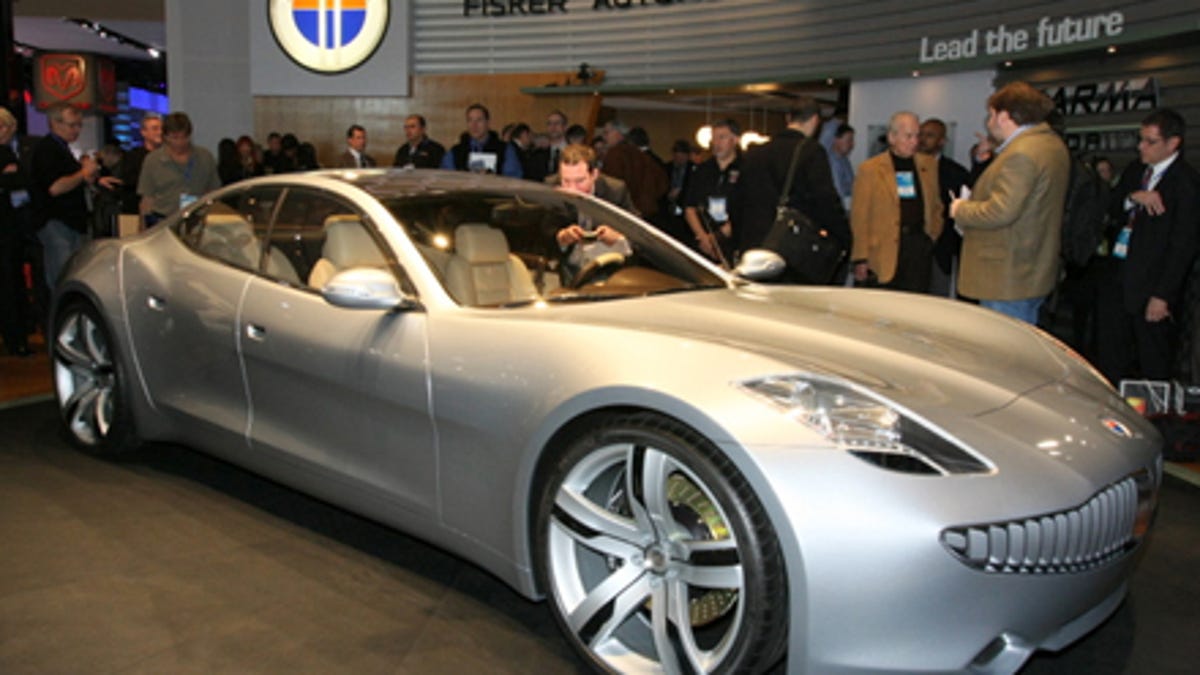Fisker's good Karma
At a dinner speech recently, Henrik Fisker laid out his plans for Fisker Automotive and its first car, the plug-in hybrid Karma.

Among the different alternative-fuel strategies playing out, Henrik Fisker is betting big on plug-in hybrids. At a recent dinner speech, he said plug-in hybrids, or PHEVs, will be the dominant type of car for the next 10 to 15 years. And he has reason to hope that will be the case as his start-up company, Fisker Automotive, launches the Karma sedan, with its PHEV power train, in June of next year.
Fisker gained fame as an automotive designer for BMW, where he came up with the stunning Z8, and with Aston Martin, designing the DB9 and Vantage. This background explains the very nonsedan looks of the the Karma, which is styled like a GT.
But starting up a car company is no easy task, and Fisker says it wouldn't have been possible 10 years ago. And not only are the troubles of current major automakers creating an opening, but the pressing need to reduce our reliance on oil is allowing a new era of automotive innovation.
The big automakers have an infrastructure that would be very hard to build up without huge amounts of capital, so Fisker Automotive went about designing the Karma by looking for preexisting parts. Early on, the company partnered with Southern California-based Quantum Technologies, which had already built a series hybrid-drive concept for the military.
This hybrid system, called Q-Drive, uses two rear-drive motors, a lithium ion battery pack that runs longitudinally down the center of the car, and a gasoline engine as a range extender under the hood. The Q-Drive produces 400 horsepower and has already undergone significant testing by Quantum Technologies.
Fisker Automotive isn't building the engine, either, instead purchasing it from GM. It's a turbocharged four-cylinder currently being used in the Pontiac Solstice GXP. The battery pack will come from Enerdel, and the Karma will be built on a contract basis by the Finnish company, Valmet. Having another company actually build the cars might seem questionable, but Valmet already proved itself as a contract builder with the Porsche Boxster and Cayman.
The Karma is supposed to go 50 miles on electric power only, after which the engine will kick in to power the electric motor. The driver will be able to choose between stealth and sport modes, as Fisker calls them, with the latter relying on more electricity generated by the gas engine to go from 0 to 60 mph in under 6 seconds. Fisker pointed out that the power train is currently being tested around the company's Irvine, California headquarters in pick-up truck mules.
A solar roof will come standard in the vehicle, which, in a sunny climate, adds 7 to 8 miles per week of drive time. Cabin technology in the Karma is controlled with a 10.5-inch touch screen with haptic feedback.
The Karma will be offered in three trims, dubbed Eco Standard, Eco Sport, and Eco Chic, ranging from $80,400 to $98,900, after a $7,500 PHEV tax credit. The Eco Chic model does away with leather seats standard in the other models in favor of vegetarian-friendly materials and salvaged wood.
Fisker also said the company is working on a new model, with the idea that it would be an affordable mass-market car, but still using the Q-Drive PHEV system.

